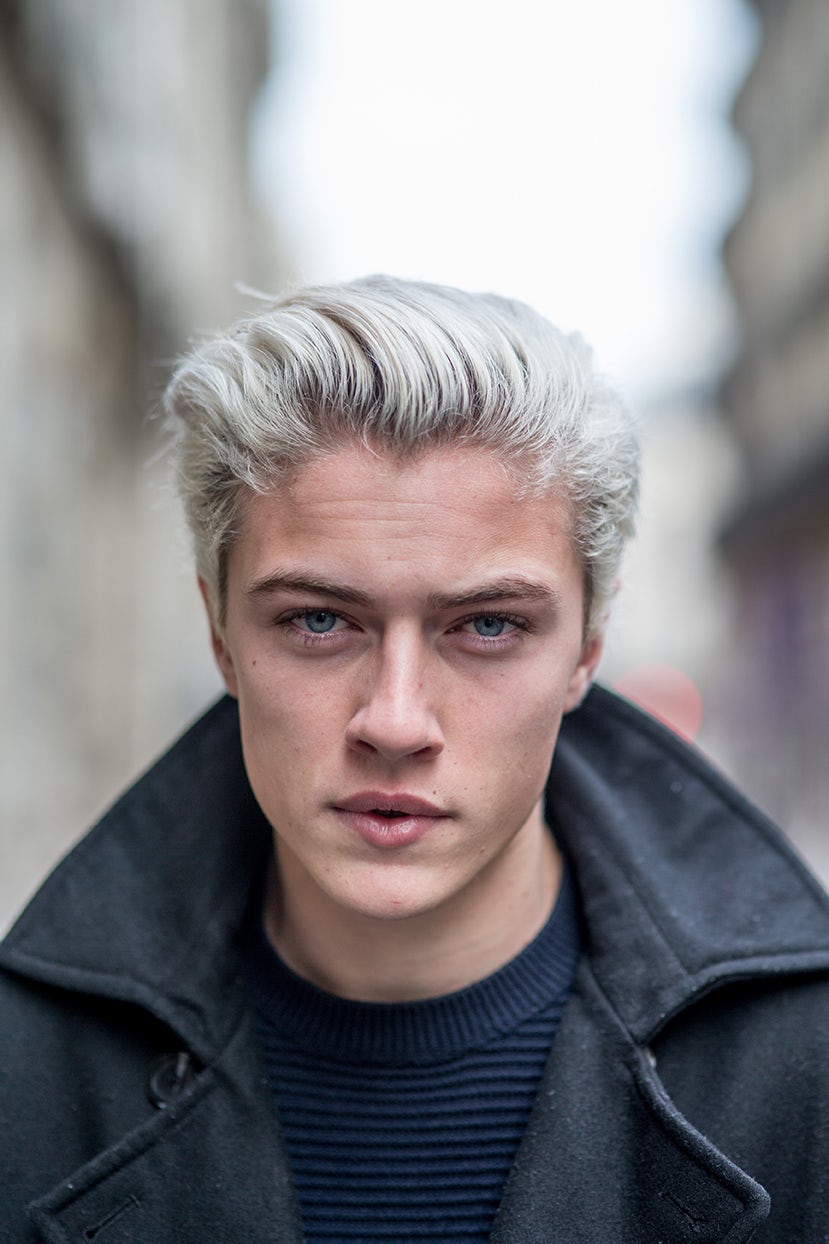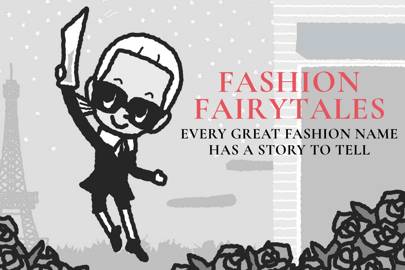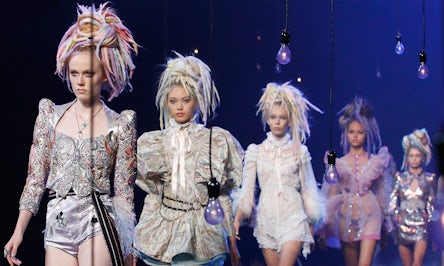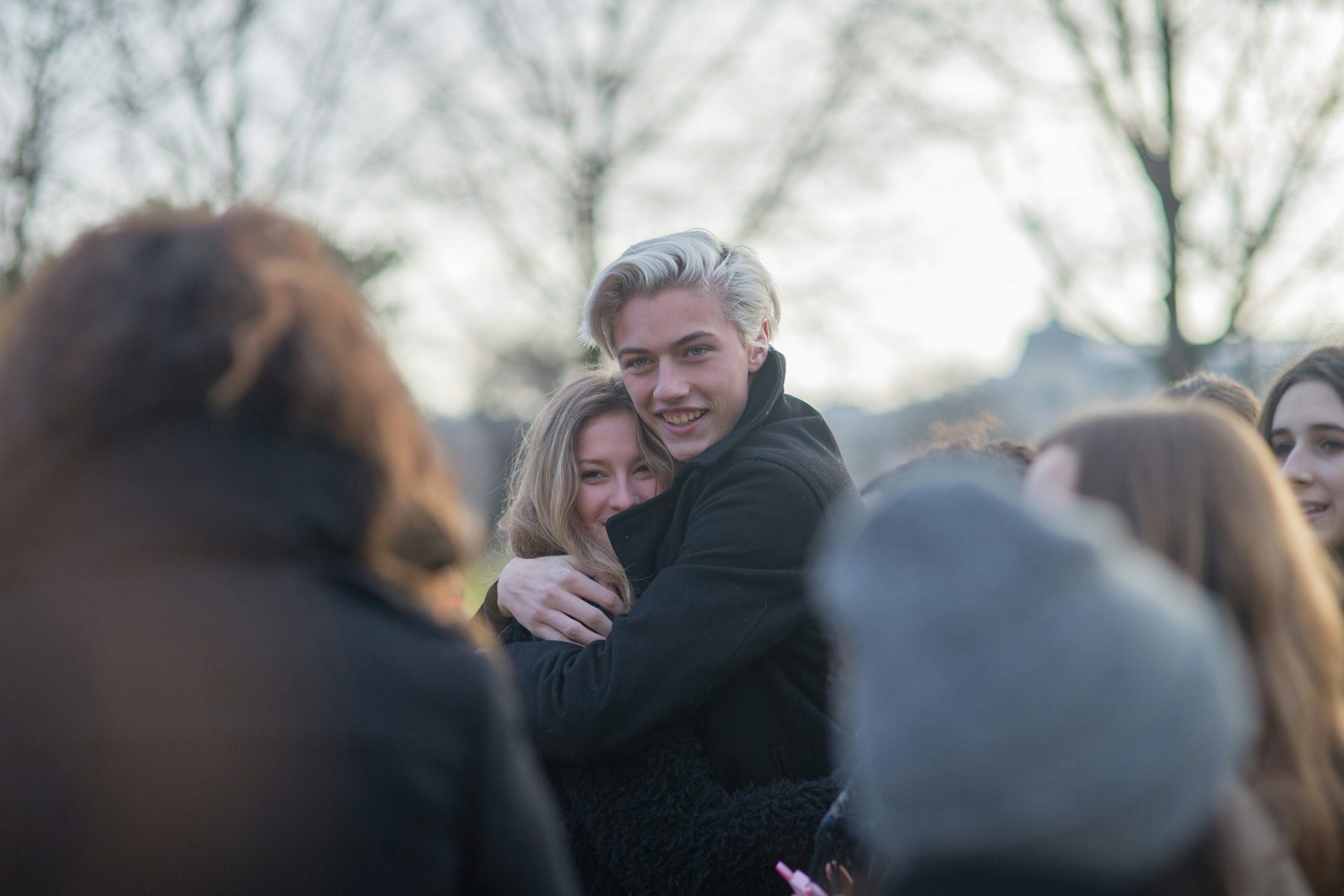Lucky Blue Smith, who has been compared to both River Phoenix and a young Brad Pitt, posts the Instagram photo at 12.15pm on Sunday from a small café near Colette in Paris’s 1st arrondissement: “PARIS Here is another chance to come say hi to me! Come meet at 4pm at the Fete Foraine du jardin Des Tuileries!! Come!!! I wanna meet you all.”
It’s 4.00pm and the 6’3” sixteen-year-old is walking down a one-way lane that connects Rue Saint-Honoré and Rue de Rivoli when the first fans notice him. They lead him across the street to the Tuileries entrance, where another six girls stand waiting, iPhones at the ready. They all start snapping photos. Inside the gates, four more girls are dancing from foot to foot and tugging each other’s sleeves. “C’est Lucky!” In the distance, from over by the ferris wheel, at least 40 girls can be seen sprinting in his direction. Passersby stop and stare. Many pull out their phones to snap the stampede. Lucky smiles and waves; relaxed, engaging and effortlessly charismatic amidst the chaos. And the fans just keep coming. There are now over 100 girls huddled in a massive circle around him. Lucky laughs as they touch his hair, kiss him on the cheek and grab him in places they probably shouldn’t.
As an ‘Insta-famous’ male model with about 285,000 followers on the popular image-sharing platform Instagram, you might not know him, but teenage girls most certainly do. His fans are diverse and global, but if there’s one thing they share, it’s a near obsession with Lucky Blue. While his follower count is well below the staggering 9.2 million users who follow Cara Delevingne on Instagram, Lucky Blue boasts some impressive engagement metrics. In the last 12 hours alone, his fans have tagged him in 223 photos, some of which are modeling shots; many of which are candid shots taken from his Instagram account; others are simply screengrabbed text messages between friends talking about how much they love him. On average, his Instagram posts are liked by about 30,000 to 40,000 people each, or about 10 to 15 percent of his total following on the platform, which is significantly higher than the average rate for fashion brands, which social media analytics firm Union Metrics puts at 4.3 percent.

And, like Delevingne, Lucky’s fans don’t just follow him online, but in real life, too. He’s the only 16-year-old boy on the international fashion scene who has the power to make people show up in the flesh when he posts on social media. And he’s not afraid to use this power.
“A ton of fans showed day,” said Lucky Blue’s mother, Sheridan Smith, referring to the stampede of teenage girls who greeted the model when he exited the building after walking in the Sacai men’s show on Saturday morning. “But he told them a whole day ahead of time.”
Over the past couple of months, the sight has become increasingly common. Lucky Blue, with his perfect skin, flashing teeth and shock of white hair, shows up in a new city where he’s been booked for a shoot or a show — and girls swarm. In London, there were 60 waiting with signs and posters at Heathrow Airport. In Amsterdam, 20 stormed the American Hotel where he was staying. In Milan, they lurked outside the Fendi show. This kind of following is unusual for a male model.
And yet nothing had prepared Lucky and his mother for what happened on Saturday in Paris. “The crowd of girls was so big on this small street that they were literally blocking traffic,” Sheridan says. “There must have been 75 of them. Two older girls took charge and led the fans through to an open square.”
This is Lucky’s freshman show season in Europe. In London he booked Tom Fordand Dunhill; in Milan he walked Etro, Philipp Plein, Bottega Veneta and Fendi; and in Paris he walked just one, Sacai. Saint Laurent has put him on hold every season since he was 14, but is yet to book him for a show.
Lucky’s biggest jobs to date include a CK One campaign shot by Mario Sorrenti, a Gap campaign and a Tommy Hilfiger campaign, featuring an ensemble cast of models, to be released this spring. Working with a range of prestigious brands has increased Lucky’s bankability and exposure. Meanwhile, for the brands that hire him, his social media profile can increase their visibility among a new generation of post-Internet consumers (Lucky was just five years old when Facebook was first launched) who are expected to hit their earning peak in 2020.
“Before I came to Italy, I’d never heard of most of these designers,” he says. The same is true of much of his audience. “I think I’d heard of Fendi and Gucci and that’s it. What’s that one I did? Botte… Venet or something? And Roberto Cavalli, I didn’t know either.” A photo he posted of himself on the catwalk at Roberto Cavalli garnered 30,464 likes and 599 comments.
“His fans love him,” says Sheridan. “He has about 20 fan-pages. The funny thing is, most of these kids don’t even know about his music. That’s the next step — I don’t think any young boy ever sees modeling as the end game. Wait till they see him playing drums.” Yes, he’s also a musician, and it’s a family affair.
Lucky Blue and his three older sisters — Pyper America, Daisy Clementine and Queen Starlie — are in a surf-rock band named The Atomics, which they started together several years ago.
“We’re working on our first album as a band,” he says. “It’s kinda crazy because right now I’m in Europe doing fashion week and my two sisters are in LA writing with our Dad and Pyper’s in New York for fashion week, but she’s recording her harmonies over there and sending them through, then I’m flying to New York for fashion week, too.”
Pyper and Daisy, standing at 5’10” and 5’10.5, respectively, both model too. Queen Starlie (just Starlie to her family), at 5’3”, is too short to model. “She’s fun-sized,” says Sheridan. “But she’s lead singer of the band.”
Lucky Blue was 10 when his older sister Daisy Clementine was discovered by a model scout in Utah and sent to Next Models Los Angeles. Alexis, the director of the agency, asked Lucky to come back in a couple of years. Two years later, on a family road trip to California, they stopped by Next and the whole Smith clan was signed on the spot. “We kept getting called back,” says Lucky. “Next were setting up all these meetings with people about reality TV shows and Nickelodeon shows, but I just wanted to go to the beach.” A few days later they did their first shoot together as siblings and as a band. The photographer was Hedi Slimane and the photos appeared in Vogue Homme Japan. The Smiths relocated to Los Angeles soon after.
“Acting, modeling, music, we’re trying it all,” says Lucky. He’s about to start work on an indie movie directed by a family friend named Rob Diamond. It’s a love story written specifically for Lucky. His dream co-star? “Candice Swanepoel. She’s so hot.”
For the moment, money is tight. The six Smiths live on Hollywood Boulevard, near the Chinese Mann Theatre, in a two-bedroom apartment. The parents are in one room, the four siblings in another. “It was a family decision to move to California from Utah,” says Sheridan. “It hasn’t been easy, but if one of us succeeds, we all succeed. We’re all working together to try and make this happen.” Is she a ‘momager’? She laughs. “I don’t like that word, but I do like to support and empower my children.”
The moment they arrived in LA, the kids, who are home-schooled, were introduced to a crew of Internet-famous teenagers who hang out together regularly and post pictures of their adventures. “Some have, like, 532,000 followers on Instagram,” says Lucky, “and others have like 2 million. They’d post pictures with me and I got like 50,000 followers straight away. Once I got up to like 110,000 it grew on its own. I’m getting like a thousand to two thousand [new followers] every day.”
Unlike traditional celebrities who protect their private lives, many Internet-famous kids, like Lucky, are endlessly open and accessible and want to interact with their fans — within reason. “I get about 150 direct messages a day on Instagram,” he says. All from girls. He doesn’t open them. “I don’t want to disappoint them by not replying,” he says, “But if I did reply to all of them I’d never have time for anything else.” As a Mormon, he’s also planning on abstaining from sex until he’s married.
Lucky says he’s equal parts thankful for, empathetic towards, and confused by his fans. He repeatedly stresses that he doesn’t want to let them down and also that he’s not entirely sure what has made him so popular.
“I don’t want to be one of those kids who gets famous and then changes and becomes cocky. That’s why it’s so important to me to try and take a photo with every girl who comes to see me. I don’t really get why they seem to like me so much, but if I can make them feel happy by sticking around and that makes their day better, then what’s an extra 30 minutes to me? What else am I going to be doing?”
Back in the Tuileries, a girl is slumped against a wall, heaving breaths and crying uncontrollably. When Lucky sees her, he asks everyone to move aside to allow him to go and talk to her. He and Sheridan crouch down next to her. He holds her hand as she looks up at him and smiles and cries. She’s so overwhelmed she can hardly talk, but she hugs him for 15 seconds and kisses him on the cheek before letting go. The moment he turns and walks away, she faints cold on the wet ground. The police run over. “This is finished!” they shout in French. “Please exit the Tuileries!”
We hustle him through the crowd and flag a cab on Rue de Rivoli. The girls beg him to stay. “Please Lucky! One more photo!” He sits in the front seat, winds down the window and tells the driver to wait so a zealous crew of three who’ve stopped oncoming traffic, can poke their heads in for a final shot. As we pull away, he slumps back in his seat. “Wow, that was way bigger than yesterday. I used to think my friends in LA who do organised meet-and-greets with security guards were just being cocky, but now I think I get it.”
He stops talking for a moment, so he can reply to a direct message sent from one of the girls who had just showed up in the Tuileries. She runs the fan page @luckysfacts and he's thanking her for coming. “That was kinda crazy.”




































